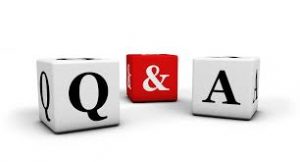
In the printing industry, there are many different brands that offer thousands of different models of printers that fit a niche for just about every office. Along with these different styles of printers come the various designs of printer cartridges that function with them. There are many different shapes and sizes, but fundamentally they all work the same, containing some of the functioning parts and material that will transfer the image you’ve created to the page. We’ve covered already the difference between ink and toner cartridges. Now we will discuss the difference between a one part replacement cartridge and a two part replacement cartridge.
What is an Imaging Drum? In order to understand the difference between a one part and two part cartridges, it is important to learn about the different functions of cartridge parts. The imaging drum is a consumable part that is responsible for transferring the image or text to the paper. It can go by a number of different names, like imaging unit, drum unit or photoconductor unit. This part can be sold as either part of or separately from a toner cartridge. You can recognize this part by its cylindrical shape and reflective surface. It is important not to touch the imaging drum as this can adversely affect the quality of the image it creates.
How does a laser printer work? Two of the important parts in the way a laser printer functions are the laser itself and the imaging drum. Utilizing the laser beam light, the printer alters the electrical charge on the imagine drum to reflect the image or text to be printed. The drum is then rolled through the reservoir of toner powder, which is picked up by the charged portions of the drum. The paper is passed along the drum and with a combination of heat from a fuser and applied pressure; the image is transferred to the page. Because the laser writes on the drum for each print, the imaging drum goes through a lot of wear and tear and must be replaced after a certain amount of pages.
Why a two part cartridge? While some printer manufacturers design their printers to use a combination cartridge that contains both the imaging drum and toner reservoir, there are those that develop these two consumable parts separately. The main purpose for that is the drum yield will almost always outlast the toner yield, and in some cases, significantly. Commonly, an imaging drum unit can deliver quality images through the replacement of three to four, and in some cases more toner cartridges. Depending on how often you print, how large your print jobs are and the environment that your printer is kept in, these factors can have a direct impact on how long an imaging drum can last. Since having a separate cartridge set up can allow for higher yield capacity toner cartridges, a two part system will often mean less wasted toner and fewer drum replacements since you will only replace these consumable parts as needed. With a combination all in one cartridge, toner and the imaging drums are both replaced each time regardless of whether they are completely expended or not.
Yield is only estimation. It is important to keep in mind that yields posted on both a drum and toner cartridge is an estimation based on average use. It is not uncommon for this number to vary based on use and environment. Printing often; printing graphs, logos or text covering more than 5% of the page and printing large jobs that consist of several pages at a time will cause the toner to deplete and the drum to wear as the printing process and the heat created during it can cause the imaging drum and other functioning parts to deteriorate at a quicker pace. Those offices that do high frequency, heavy printing will benefit from a two part cartridge, as this allows these parts to be replaced on an as needed basis. When the imaging unit gets close to the estimated number of pages programed for replacement the printer will give a warning that the drum will need to be replaced soon. If you notice that the print quality is still good, the imaging drum counter can be reset as if it has been replaced as often as needed until print quality deteriorates and the imaging drum actually requires replacement. For offices that do not do regular, heavy printing jobs, this is a huge benefit and will save from having to replace the unit when it is not needed. Imaging drum units and toner cartridges vary in overall yield capacity. This detail should be taken into account when shopping for and deciding which printer you will purchase. Selecting a machine that offers a high yield drum and toner cartridge will save money over time, regardless of the initial cost of the printer.